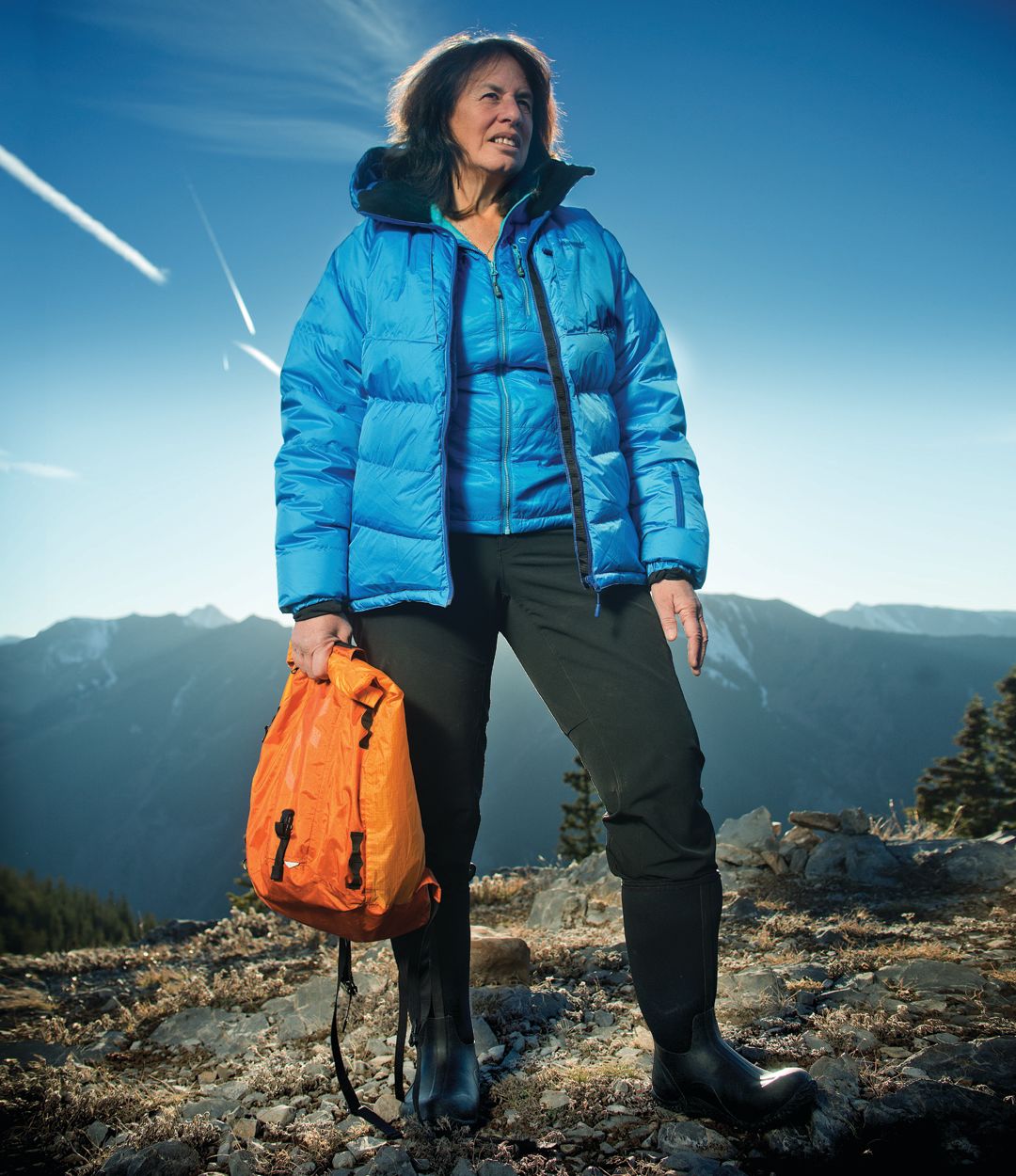A Q&A with Polar Conservationist Denise Landau

Image: Karl Wolfgang
ASPEN SOJOURNER: How did a ski pro at Snowmass end up becoming one of the world’s most respected polar conservationists?
Denise Landau: I just really love ice and snow!
AS: OK, but there had to be some sort of path, right?
DL: It started when I got involved in the expedition cruise industry. I had been teaching skiing here in the winters and working in Alaska in the summers. In 1990, I was offered a job with Clipper Cruise lines setting up adventure itineraries in remote parts of the world. I hired naturalists for the ships and set up the educational infrastructure. Eventually, I became a consultant for seven or eight ships going to really remote regions.
AS: How did you zero in on the polar regions?
DL: They are such incredible places to visit: sea ice, big wilderness, big animals, big polar bears, big whales, walruses, seal populations, beaches full of hundreds of thousands of penguins. These habitats are so incredibly wildlife-rich.
AS: What was the impetus to move toward sustainable tourism and conservation?
DL: In the early 2000s, tourism was growing faster in Antarctica than anywhere else in the polar regions. So I worked with a small group of people to create a set of guidelines and standards to minimize the environmental impacts. We [the International Association of Antarctica Tour Operators] created a fantastic model that’s now being used all over the world. It’s been really successful and is one of the things I’m most proud of in my life.
AS: That’s warranted! Not many people earn a named feature on this planet, yet your work in responsible tourism has been honored via the Landau Glacier in Antarctica. You’ve also been instrumental in ridding South Georgia Island of invasive rats.
DL: The island is equivalent to, and in many ways far richer than, the Galapagos in the sheer number and variety of [indigenous] wildlife. You can only visit by expedition cruise ship. All passengers [4,000–8,000 annually] are briefed on the Habitat Restoration Project and given an optional donation form. It has become the largest project of its kind ever done on an island or land area, and we funded it predominantly through tourists. We raised $12 million to kill rats!
AS: Interesting how tourism was part of the solution.
DL: In the world today, one in six jobs is in tourism. Tour operators that take people to wilderness areas play a huge role in trying to protect them. I co-founded Linking Tourism and Conservation to find the best examples from around the world and demonstrate that, yes, this can work.
AS: The trips you lead to the Arctic and Antarctic are adventurous, with Zodiac rides, polar bears, and icy waters. What do you love about bringing people to these extremely foreign landscapes?
DL: You can watch people sitting quietly—just absorbing and enjoying. We encourage people to put away their cameras, sit still, and enjoy their surroundings. They’re blown away by the beauty and the sheer amount of wildlife. I do that with my ski clients here, too. We’ll stand on a run and take off our skis—just to stop and look.
AS: You have a lot on your plate. Why do you still teach skiing?
DL: I’m a teacher at heart. I love to ski, and Aspen has the best skiing in the world. When I come back from an amazing place, I look around at our mountains, and I’m just so happy to be here.
AS: There’s so much discouraging environmental news. How do you stay optimistic?
DL: You have to be! It’s a horror show if you look at it realistically. Or you can look at it optimistically, like I do, and say, “Let’s give it a try.”
AS: How do you even begin?
DL: If you want to go save a part of the world, get in there and figure it out. Just do something. It’s amazing how simple it is once you get your hands dirty.













































